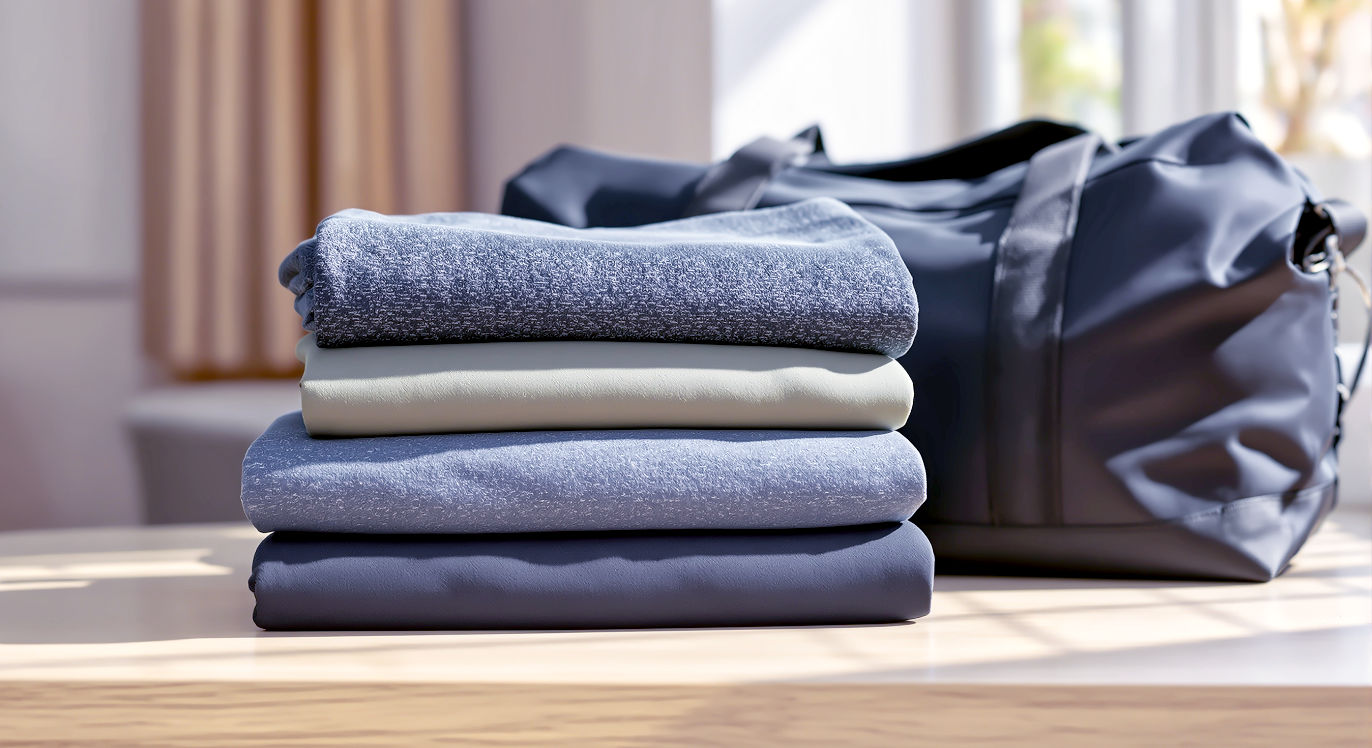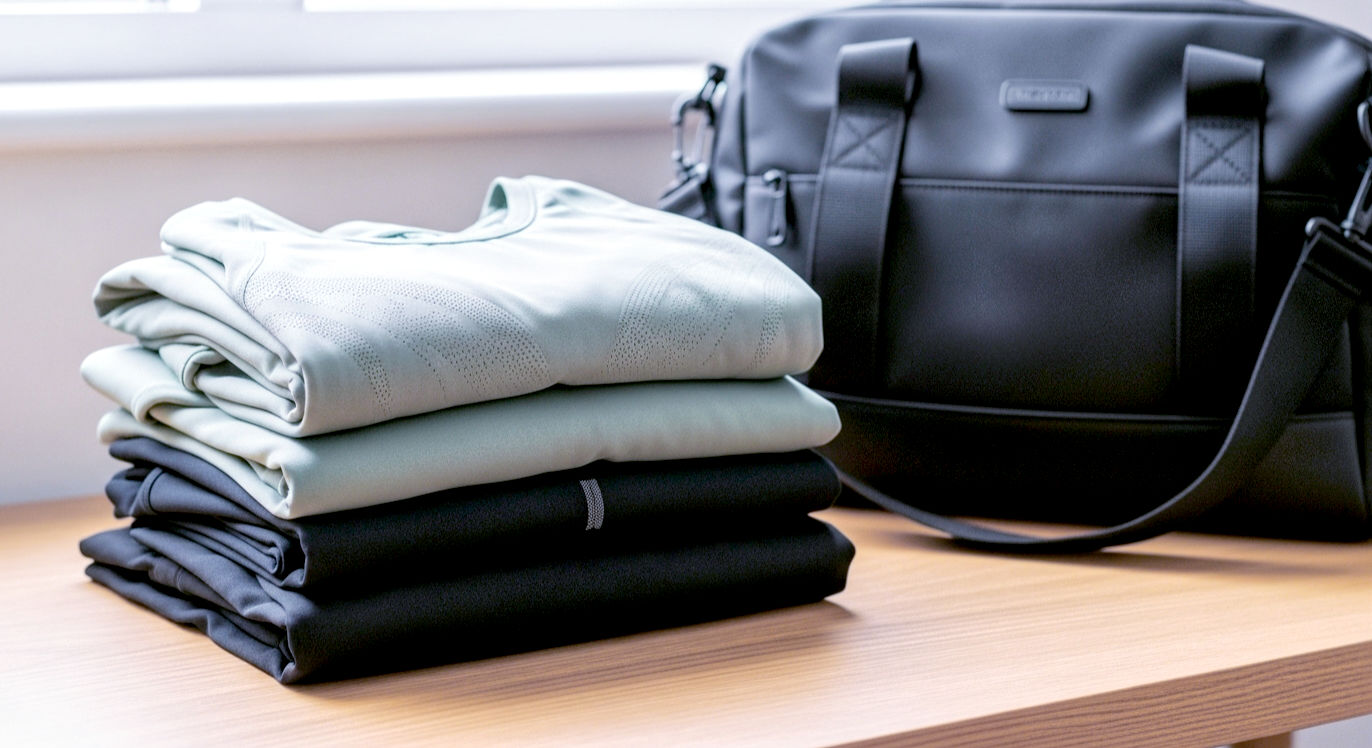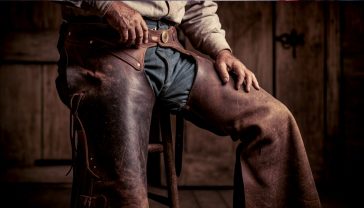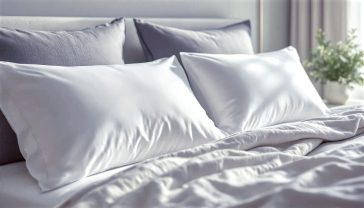More Than Just a Bad Smell: The Guide to Why Fresh Gym Kit Matters
Smelly gym bag? It’s more than just a nuisance. Unwashed kit can cause skin infections, sap your motivation, and ruin expensive gear. Here’s why.

This post may contain affiliate links. If you make a purchase through these links, we may earn a commission at no additional cost to you.
Let’s be honest. We’ve all been there. You’re rushing to get to the gym after a long day at work, and you reach into your bag to pull out your kit. But instead of fresh, clean fabric, your fingers touch something… damp. And then the smell hits you. It’s that uniquely potent aroma of forgotten sweat, a ghost of workouts past. You might call it the scent of ‘gains’, or tell yourself it’s just a bit of lingering determination. But deep down, you know the truth. You’re about to wrap your body in yesterday’s—or, whisper it, the day before yesterday’s—workout.
You might think, “What’s the harm? It’ll be sweaty again in ten minutes anyway.” It’s a tempting bit of logic, but it’s a trap. That slightly musty t-shirt and those not-quite-dry shorts are far more than just a bit unpleasant. They are a thriving ecosystem of microscopic critters, a potential saboteur of your skin’s health, and an unseen drag on your performance and confidence.
Having fresh gym kit isn’t just about being considerate to the person on the next treadmill. It’s a fundamental, non-negotiable part of a healthy and effective fitness routine. It’s about hygiene, health, and even psychology. This isn’t about being precious; it’s about being smart. In this guide, we’ll unpack everything you’ve ever wanted to know (and a few things you probably haven’t) about what’s really going on with your sweaty gear. We’ll dive into the science of stink, uncover the hidden health risks, and give you a definitive masterclass on how to care for your kit, so it works as hard as you do.
The Science of Sweat and Stink: What’s Really Brewing in Your Gym Bag?
To understand why old gym kit gets so offensive, we first need to clear up a common misconception: sweat itself doesn’t actually smell. The fresh stuff rolling off you during a HIIT class is almost completely odourless. It’s mostly water and salt. The infamous body odour, or ‘BO’, is actually the work of bacteria.
It’s Not You, It’s the Bacteria
Your skin is home to trillions of microorganisms, a bustling community of bacteria that, for the most part, are harmless. The problem starts when these bacteria get hungry.
Think of it like this: your body has two main types of sweat glands.
- Eccrine glands are found all over your body and produce the watery sweat that cools you down. This is the stuff that drips from your forehead.
- Apocrine glands, found in areas with more hair follicles like your armpits and groin, produce a thicker, milkier sweat that contains fats and proteins.
This thicker sweat from your apocrine glands is a veritable feast for the bacteria living on your skin. They gobble up these fats and proteins, breaking them down for energy. The waste products they excrete during this process are what cause the distinct smell of body odour. So, it’s not your sweat that smells; it’s the by-product of bacteria having their dinner.
Your Gym Kit: The Perfect Petri Dish
Now, imagine your gym clothes. During a workout, your high-performance, moisture-wicking top is brilliant at pulling all that sweat—and the bacteria feasting on it—away from your skin. This is great for keeping you comfortable mid-session. But once the workout is over, that top has become a warm, damp, nutrient-rich paradise for those bacteria.
Modern sportswear fabrics like polyester, nylon, and elastane are fantastic for performance, but they have a downside. They are oleophilic, which is a fancy way of saying they attract and hold onto oils. This includes the fatty, oily sweat that bacteria love so much.
When you throw that sweaty kit into the dark, enclosed space of a gym bag, you’ve essentially created the perfect incubator. The bacteria multiply at an astonishing rate, feasting, reproducing, and creating an ever-more-potent stink. This is why a gym bag left in a car on a warm day can develop a smell that could stun a rhino. The bacteria create a sticky, stubborn matrix called a biofilm, which works its way deep into the fabric’s fibres. This is the source of that dreaded “perma-stink” that even a normal wash can’t seem to shift.
Natural fibres like cotton, on the other hand, are less oleophilic. They absorb moisture but don’t trap the smelly oils in the same way. The trade-off, of course, is that a cotton t-shirt becomes heavy and soggy during a workout, which can lead to chafing and discomfort.
The Unseen Dangers: More Than Just a Nasty Whiff
While the smell is the most obvious consequence of re-wearing gym kit, the real problems are the ones you can’t see. Your unwashed clothes are a breeding ground for a whole host of microbes that can wreak havoc on your health.
Your Skin Will Not Thank You
Your skin is your body’s first line of defence against infection. When you put on dirty gym clothes, you’re pressing a fabric saturated with bacteria, fungi, and yeast directly against this vital barrier for an extended period. This can lead to a catalogue of unpleasant skin conditions.
Acne and Folliculitis
One of the most common issues is body acne, or ‘bacne’. The combination of friction from your clothes, plus the sweat, oil, and bacteria, creates a perfect storm for clogging your pores. This leads to breakouts on your back, chest, and shoulders.
Even more common is folliculitis, which looks like a rash of small red spots or white-headed pimples. It’s caused when bacteria (usually Staphylococcus aureus) infect your hair follicles, causing them to become inflamed. It can be itchy and sore, and it thrives in the exact conditions created by dirty, tight-fitting workout gear.
Chafing and Intertrigo
Clean, dry gym kit is smooth and designed to move with your body. Dirty kit is a different story. As sweat dries, it leaves behind a salty, abrasive residue that makes the fabric stiff. When this crusty fabric rubs against your skin, it causes painful friction and chafing.
In skin-on-skin areas like the inner thighs, armpits, or under the bust, this constant dampness and friction can lead to intertrigo. This is an inflammatory rash that makes the skin red, raw, and sore. Even worse, this broken skin provides an easy entry point for bacteria and fungi to cause secondary infections.
Fungal Infections: Ringworm and Yeast
The warm, dark, and moist environment of your used gym kit is a five-star resort for fungi.
- Ringworm (Tinea corporis) is a classic example. Despite its name, it’s not a worm but a fungal infection that causes a red, scaly, ring-shaped rash. It’s highly contagious and easily picked up from contaminated gym mats, benches, or towels, and it will happily set up home in your damp clothes.
- Yeast infections, caused by an overgrowth of Candida, are another major risk. While often associated with intimate areas, yeast infections can occur in any warm, moist skin fold. Wearing sweaty, non-breathable leggings or shorts for hours after a workout is a primary cause of irritation and infection.
A Gateway for Bacterial Infections
While less common, more serious bacterial infections are a genuine risk. Gyms are known hotspots for bacteria like MRSA (Methicillin-resistant Staphylococcus aureus), a type of staph bacteria that is resistant to many antibiotics.
MRSA can cause serious skin infections that look like painful boils or abscesses. If it gets into your bloodstream, it can become life-threatening. You can pick it up from shared equipment or surfaces. If that bacteria transfers to your clothes, and you then have a small cut, graze, or even a patch of chafed skin, you’re giving the infection a direct route into your body. While the risk for a healthy individual is relatively low, it’s a powerful reminder that gym hygiene is about more than just odours.
How Dirty Kit Sabotages Your Workout: The Performance Factor
So, we’ve established that re-wearing gym gear is bad for your skin and a potential health hazard. But it also has a direct, negative impact on your actual performance in the gym. It can affect your comfort, your mindset, and even your motivation.
Comfort is Crucial for Performance
Think about the last time you had a really great workout. Chances are, you weren’t distracted by your clothes. High-performance activewear is designed to be forgotten. It should feel like a second skin, wicking away sweat and moving seamlessly with your body.
Dirty kit does the opposite.
- It Loses its Wicking Ability: When the fibres of your technical fabrics get clogged with dried sweat, skin cells, oils, and detergent residue, they can no longer pull moisture away from your skin effectively. The fabric becomes saturated, leaving you feeling clammy, wet, and heavy.
- It Restricts Movement: Fabric that’s stiff with dried sweat doesn’t have the same stretch and flexibility. It can feel tight and restrictive, hindering your range of motion during exercises like squats, lunges, or yoga poses.
- It Causes Distraction: Instead of focusing on your form or pushing for that extra rep, you’re distracted by the sticky feeling of your top, the itchiness of a seam, or the uncomfortable rubbing of your shorts. This constant, low-level irritation chips away at your mental focus and can shorten your workout.
The Psychological Edge: The Power of Fresh Kit
There’s a well-documented psychological phenomenon called “enclothed cognition.” The basic idea is that the clothes we wear have a measurable impact on our thoughts, feelings, and behaviour. It’s why a sharp suit can make you feel more confident in a business meeting, or why a doctor’s white coat can make them feel more focused and attentive.
The same principle applies in the gym.
- Putting on a Uniform: Pulling on a fresh, clean, well-fitting gym outfit is a powerful ritual. It signals to your brain that it’s time to work. It’s your uniform for the task ahead. It helps you get into the right headspace, boosting your focus and motivation before you’ve even started your warm-up.
- Confidence Boost: When you feel good in what you’re wearing, you feel more confident. You’re not worrying about whether you smell, or if that damp patch on your back is really obvious. This self-consciousness can be a huge mental burden, making you less likely to push yourself or try new exercises. Feeling clean, fresh, and ready allows you to focus 100% of your mental energy on your workout.
- Removing Barriers: If the only kit you have available is dirty and smelly, it becomes another barrier to exercise. It’s an easy excuse to skip a session. “Oh, I haven’t got any clean kit” is a thought that has derailed countless fitness plans. Having a ready supply of fresh gear removes that excuse and makes it easier to stay consistent.
The Social Contract of a Shared Space
Finally, there’s the simple matter of gym etiquette. Gyms are communal spaces. We share the air, the equipment, and the changing rooms. Turning up in smelly kit is disrespectful to everyone around you. No one wants to be on the receiving end of your personal bacterial farm when they’re trying to focus on their deadlifts.
Being the person who smells is not a good look. It creates an unpleasant environment and can make others feel uncomfortable. Part of being a member of a gym community is contributing to a positive, clean, and respectful atmosphere. And that starts with your own personal hygiene.

Practical Help: Keeping Your Gym Kit Fresh and Clean
Alright, the message is clear: clean kit is king. But modern sportswear can be delicate and expensive. How do you wash it effectively to kill the germs and banish the stink without destroying the fabric’s high-tech properties? It’s easier than you think if you follow a few golden rules.
Stage 1: The Post-Workout Cooldown
What you do immediately after your workout is arguably the most important step.
- Don’t Let It Fester: The absolute worst thing you can do is leave your sweaty kit scrunched up in a plastic bag or at the bottom of your laundry basket. This is how you create super-stink.
- Air It Out: As soon as you get home, take your kit out of your bag and hang it up somewhere to air dry completely. Drape it over a clothes horse, a radiator (if it’s off), or a shower rail. This stops the bacteria from multiplying and makes it much easier to wash later.
Stage 2: The Washing Machine Masterclass
Washing technical fabrics isn’t like washing your jeans. You need a different approach.
- Turn Everything Inside Out: Most of the sweat, oil, and bacteria are on the inside of the fabric, so this exposes the dirtiest part directly to the water and detergent.
- Wash Cold (30°C is Ideal): This might feel counterintuitive, but hot water is the enemy of modern sportswear. High temperatures can damage the delicate synthetic fibres like elastane (Lycra), causing them to lose their stretch and shape. It can also “bake in” protein-based stains, making smells even harder to remove.
- Don’t Overload the Machine: Your clothes need room to move around to get properly agitated and rinsed. A crammed machine means a poor wash.
- Use Less Detergent, Not More: Using too much detergent is a common mistake. The excess soap doesn’t rinse out properly and leaves behind a residue that clogs the fabric, traps bacteria, and dulls the wicking properties. Use about half the amount you would for a normal load.
- ABSOLUTELY NO FABRIC SOFTENER: This is the cardinal sin of washing activewear. Fabric softener works by coating fibres in a waxy, lubricating layer to make them feel soft. On technical fabrics, this coating completely blocks the pores, destroying their ability to wick sweat and trapping odour-causing bacteria underneath. It will ruin your expensive kit.
Stage 3: Choosing Your Weapon
Not all detergents are created equal.
- Sports-Specific Detergents: It’s worth investing in a detergent designed for activewear. These contain specific enzymes that are brilliant at breaking down the fats, proteins, and oils found in sweat, rather than just masking the smell.
- The White Vinegar Trick: A fantastic and cheap alternative. Add a cup (around 200ml) of plain white distilled vinegar to the fabric softener drawer of your machine. Vinegar is a mild acid that works wonders at breaking down detergent residue and killing bacteria, without harming the fabric. Don’t worry, your clothes won’t come out smelling like a chip shop—the scent rinses away completely.
- Pre-Soak for Emergencies: For kit that’s truly offensive, a pre-soak can work miracles. Soak it for 30 minutes in a sink of cold water with a cup of white vinegar before washing as normal.
Stage 4: The Drying Process
How you dry your kit is just as important as how you wash it.
- Air Dry Whenever Possible: The intense heat of a tumble dryer is death to elastane. It breaks down the elastic fibres, causing your gear to become saggy and lose its shape and compressive qualities. Hang your kit on a clothes horse or washing line. It’s designed to be quick-drying, so it won’t take long.
- Harness the Sun: If you can, dry your kit outside in the sun. The ultraviolet rays are a natural disinfectant and an excellent steriliser.
Building a Better Gym Wardrobe: Smart Choices for a Fresher Experience
You can also make life easier for yourself by choosing your kit wisely in the first place.
- Fabric is Key: Look for fabrics that have antimicrobial properties. Many brands now incorporate silver ions or other treatments into their fabrics, which actively inhibit the growth of odour-causing bacteria.
- Embrace Merino Wool: While more expensive, merino wool is a superstar fabric for workouts. It’s naturally antimicrobial, meaning it can be worn multiple times before it starts to smell (though you should still air it out). It’s also incredibly breathable and brilliant at regulating temperature.
- Invest in Rotation: One of the simplest ways to ensure you always have fresh kit is to own enough of it. Aim to have at least three or four full sets of gear. This means you’re never tempted to re-wear something dirty because everything else is in the wash. It allows you to follow a proper wash-and-dry cycle without pressure.
The Final Rep: A Commitment to Yourself
Caring for your gym kit isn’t just another chore on your to-do list. It’s an extension of your commitment to your health and fitness. It’s a simple act of self-care that pays huge dividends.
A fresh set of kit protects your skin from infections and irritation. It ensures your expensive performance gear lasts longer and works as it should. It gives you a psychological boost, helping you walk into the gym feeling confident, focused, and ready to perform at your best. And it shows respect for the shared space and the community you’re a part of.
So, the next time you’re tempted to fish yesterday’s t-shirt out of the laundry basket, stop and think. The five minutes it takes to follow a proper care routine is a small investment that protects your body, boosts your performance, and makes your entire fitness journey a cleaner, healthier, and more pleasant experience. Your skin, your performance, and the person on the treadmill next to you will all be grateful.
Further Reading
For those who wish to delve deeper into the topics of dermatology, microbiology, and fabric care, here are some highly respected resources:
- The British Skin Foundation: An excellent resource for expert-led information on all skin conditions, including acne, folliculitis, and fungal infections. https://www.britishskinfoundation.org.uk/
- NHS (National Health Service): The UK’s primary source for reliable and accessible medical information, with detailed articles on skin infections and hygiene. https://www.nhs.uk/
- The Society for Applied Microbiology: For a deeper scientific dive into the world of bacteria and biofilms that thrive on textiles. https://appliedmicrobiology.org/
- UK Active: A leading not-for-profit body for the physical activity sector, offering insights into gym standards and best practices. https://www.ukactive.com/






